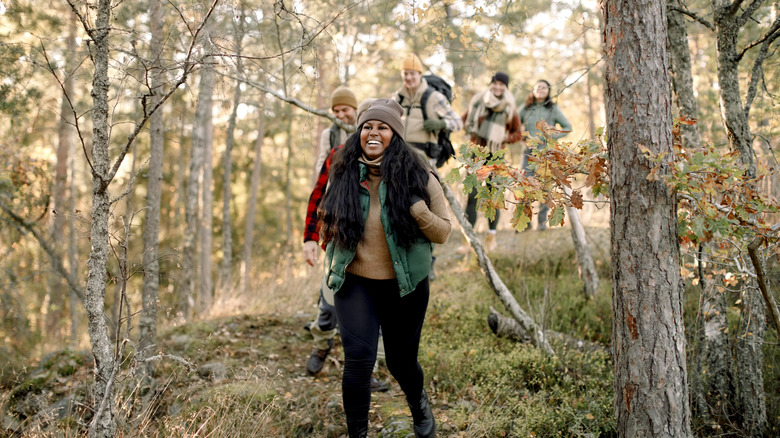Here's What You Should Wear During Your Fall Hiking Trip
Fall is a popular time to hike. During the autumn season, not only do campers get to experience spectacularly scenic fall foliage, but temperatures are cooler making for a much more comfortable hike. However, autumn is also a time when weather can change quite drastically throughout the day. While not wearing the proper clothing is a huge hiking mistake to avoid in any season, it is paramount in the fall to be properly dressed and prepared for the changing weather.
To be able to do so, you should always check the weather before hitting the trail. Again, temperatures typically change substantially throughout the day in autumn. So, don't dress solely for the forecasted daily high temperature if you are leaving early or staying late when it's likely to be much cooler. By the same token, you don't want to be overdressed once the sun comes out and the temperature begins to rise during the middle of the day.
You should also keep in mind the route you will take, as it is often cooler in shade, under a canopy of trees, or at higher elevations. Besides the variation of temperatures throughout the day and in different portions of the trail, fall is also a time of frequent frontal passages. If a front passes through while you are on the trail, the weather can change quickly, leaving you facing much different conditions than you did at the onset of your hike. Here's what you should wear during your fall hiking trip to be ready for a variety of weather conditions.
It's all about wearing layers when hiking in the fall
When hiking in the fall, it is all about layers. Wearing layers will allow you to shed or add clothing as the temperatures change. According to REI, a three-layer system works best and should consist of a base layer, middle layer, and outer layer. Each of these layers has a specific purpose, so the garments utilized for each layer should be chosen with those purposes in mind.
The function of the base layer is to wick away moisture, so the base layer should be a long-sleeve, synthetic moisture-wicking shirt. For most fall hikes, a lightweight or, at most, midweight base layer will suffice. The middle layer is meant to insulate. There are both natural and synthetic materials that can accomplish this. Choose an insulating layer for the coolest expected temperature. Fleece pullovers and vests are common choices. The outer layer is meant to buffer wind and rain. Breathable, waterproof jackets and shells are ideal. Depending on the predicted temperature, an uninsulated or lightly insulated shell should suffice.
In cooler temperatures, your lower body layers should follow this same pattern. However, during fall many hikers will go with a single-layer hiking pant that incorporates the properties of each layer. You can also pack additional layers in your backpack if you anticipate a drastic change, such as from an approaching cold front, during your hike. Hats and beanies can also help maintain body temperature as the temperature dips. Of course, you'll also still need to pack the 10 hiking essentials and make sure you are wearing the right hiking shoes or boots to ensure an enjoyable and safe hiking experience.

